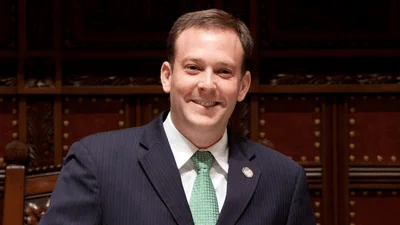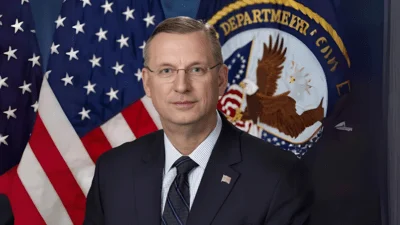While some digital asset analysts have voiced concerns that the actions the U.S. Securities and Exchange Commission (SEC) has taken against stablecoins could push innovation out of the U.S. into other countries, two economists told the Federal Newswire that they don't share those concerns. Steve H. Hanke, a professor of applied economics at Johns Hopkins University, and Matt Sekerke, a fellow at the Johns Hopkins Institute for Applied Economics, Global Health and the Study of Business Enterprise, said they believe stablecoin issuers will not leave the U.S. because they benefit from access to the U.S. dollar and financial institutions.
The U.S. SEC has stepped up its enforcement actions in the crypto industry after the November bankruptcy filing of crypto exchange FTX, and it recently turned its attention to stablecoins, Reuters reported. In February, the SEC told the blockchain platform Paxos Trust Company to stop issuing the stablecoin Binance USD (BUSD), asserting that stablecoins are securities and BUSD should have been registered as such. Some crypto experts suggested that the move against BUSD, which is the third-biggest stablecoin in circulation, is evidence that the SEC is trying to bring more of the digital asset ecosystem under its control in the absence of comprehensive legislation detailing how stablecoins should be regulated.
"Within the broader enforcement trends that we're seeing, the SEC is really asserting a lot of jurisdiction and it's trying to bring as much of this activity within its control, I think as it can reasonably do at this point," said Jason Allegrante, chief legal and compliance officer at the digital asset platform Fireblocks.
"Cryptocurrency markets rely on stablecoins as an on- and off-ramp to fiat currency, which means the U.S. dollar for most practical purposes. The most reliable model for a stablecoin is to be a liability backed one-for-one with safe, U.S. dollar-denominated assets," Hanke and Sekerke told Federal Newswire. "Under U.S. law, such a vehicle is known as a money market mutual fund. Both the fund and its managers are subject to existing laws and compliance expectations."
"Unsurprisingly, the SEC argues that stablecoins fall under the purview of U.S. securities laws. Stablecoin issuers whine and complain that regulation is bad for their creativity. Yet issuers have an existential need for close ties to the regulated financial system. Leaving the U.S. would only complicate stablecoin issuers' access to dollar-based assets and payment infrastructure – if it doesn't cut them off completely – casting doubt on the credibility of such threats."
An opinion piece in the Wall Street Journal warned that if crypto companies and their customers move out of the U.S., they could become more vulnerable to money laundering. The WSJ Editorial Board emphasized that in their efforts to protect consumers, regulators could actually be making them less safe.
"In other words, regulators are undermining their ostensible goals…As usual, financial regulators shoot first, and make others pay later,” the board stated.
Georgia Quinn, who spoke in front of the president’s Working Group on Financial Markets in November 2021, wrote in an opinion piece for Law360 that it is critical to understand that stablecoins are a technological evolution of fiat currency, backed 1:1 by currency held in reserve. As such, they are not subject to the volatility that can affect other types of cryptocurrencies, and they do not pose a risk of destabilizing the U.S. financial system, as some lawmakers have expressed concerns over.
Instead, Quinn wrote that stablecoins present an opportunity to solidify “the global prominence of the U.S. dollar in a new, digital era.” More than 90% of the stablecoins in the world are backed by the U.S. dollar. Amidst current global geopolitical tensions, American leadership in the realm of stablecoins can serve as a national security tool to ensure that the dollar retains its prominence in the global digital asset market. However, Quinn warned that if the U.S. does not embrace stablecoins, other countries will step up, and other currencies could supplant the dollar, “allowing for other countries’ trade denomination and reserves to become the new de facto choices.” Quinn wrote that if the world’s stablecoin market is driven by the U.S. dollar, it will support America’s role as the leader in global capital markets, monetary policy and the digital asset ecosystem.
Hanke is also a senior fellow at the D.C.-based Cato Institute, a senior fellow at the California-based Independent Institute, a senior adviser at the Renmin University of China’s International Monetary Research Institute in Beijing and a counselor to the Center for Financial Stability in New York.
Sekerke, who authored "Bayesian Risk Management: A Guide to Model Risk and Sequential Learning in Financial Markets," is also president of the strategy firm Ndogenous.









